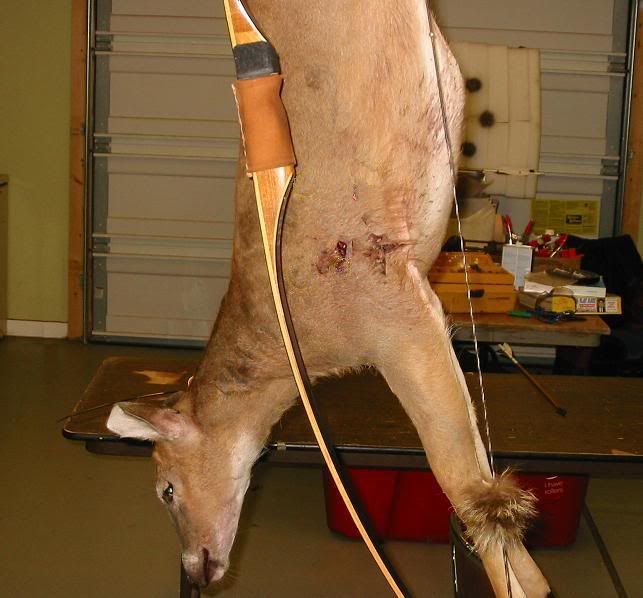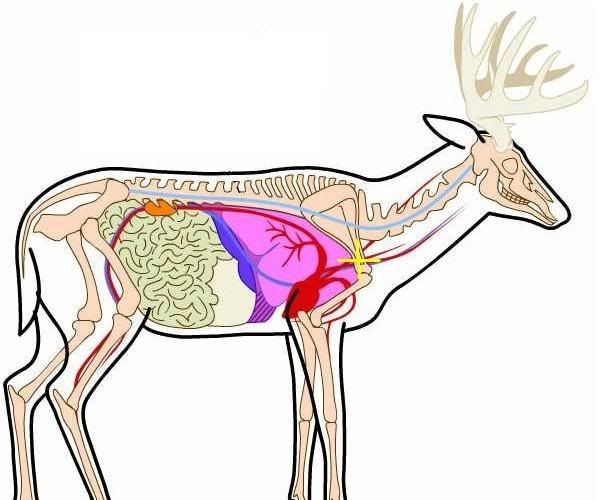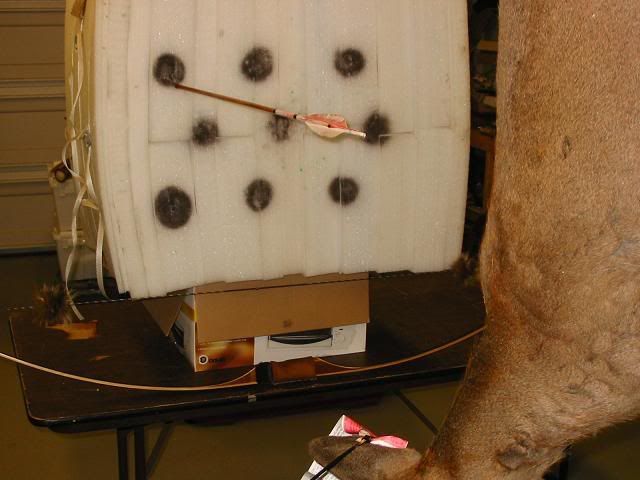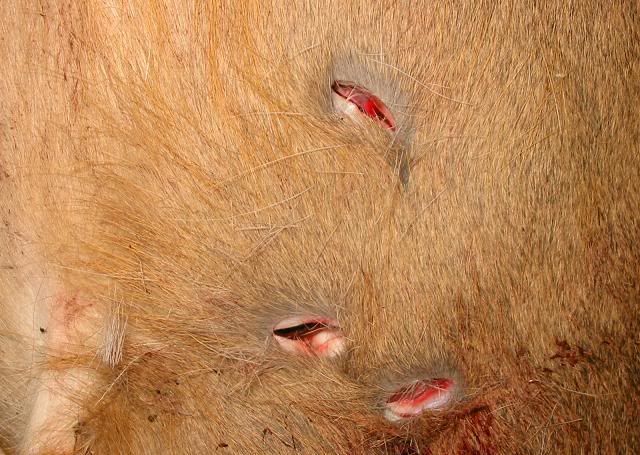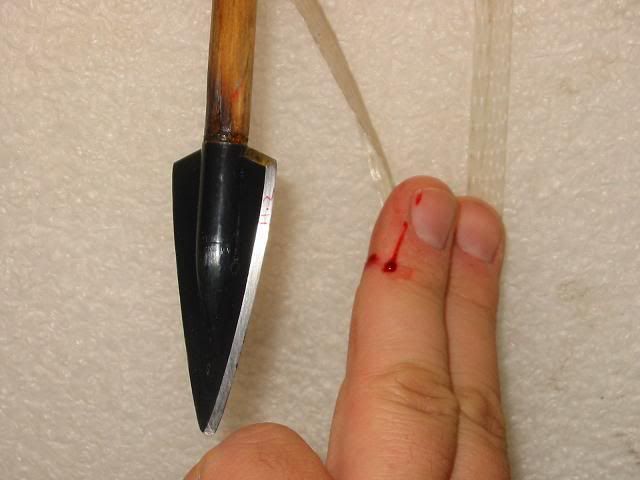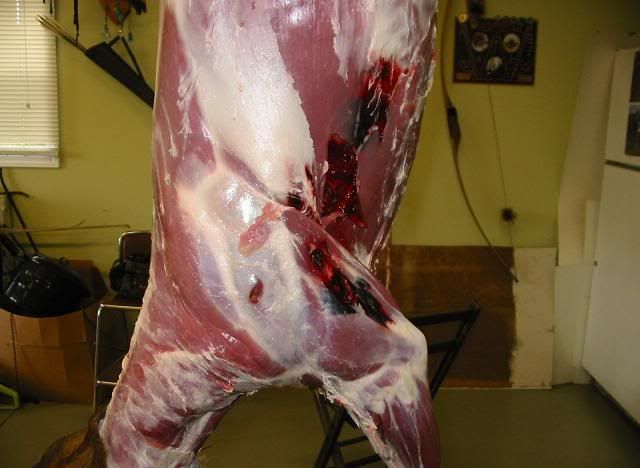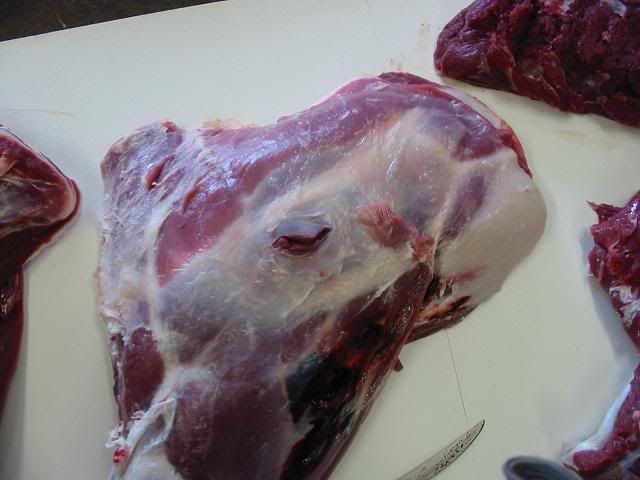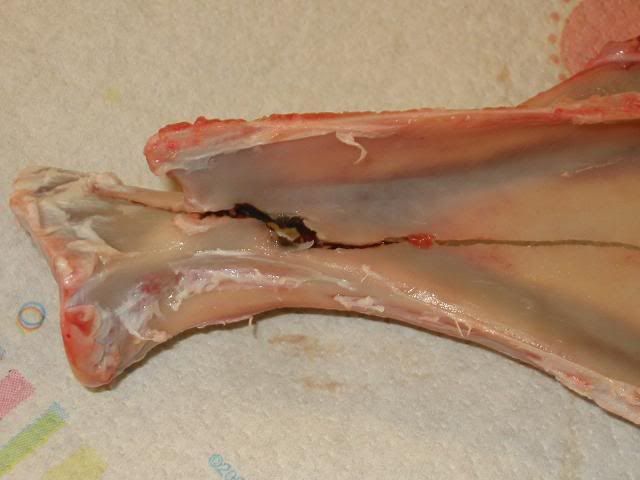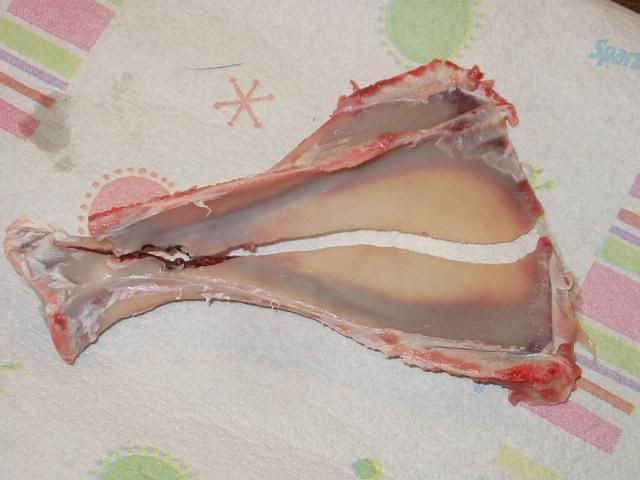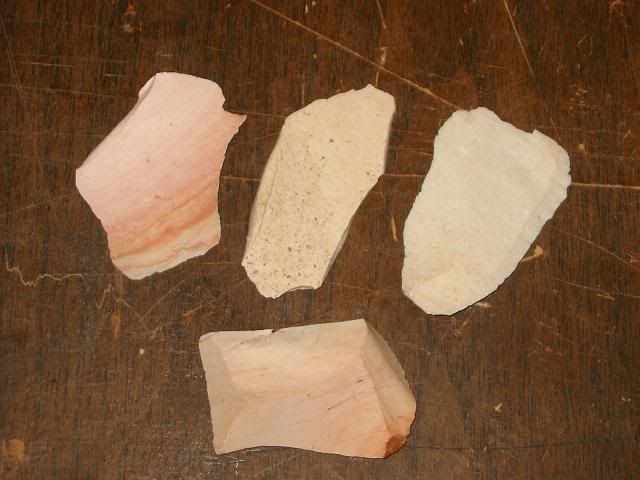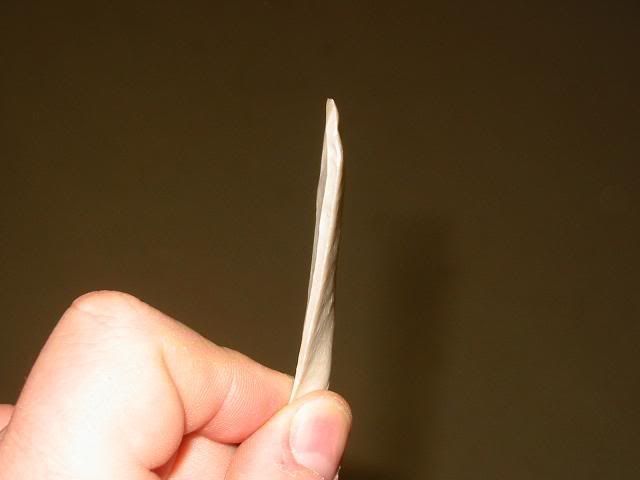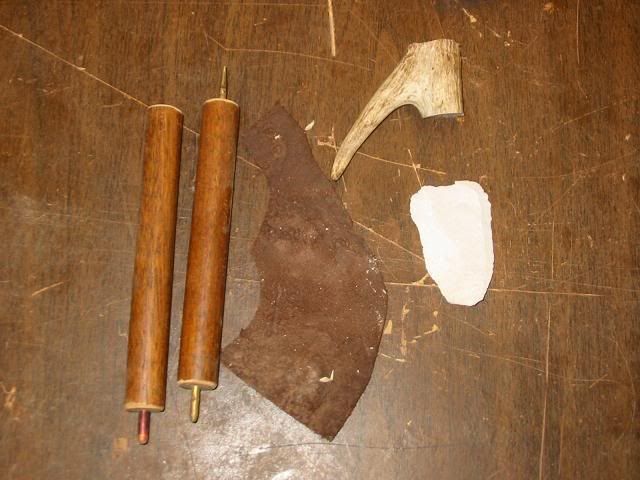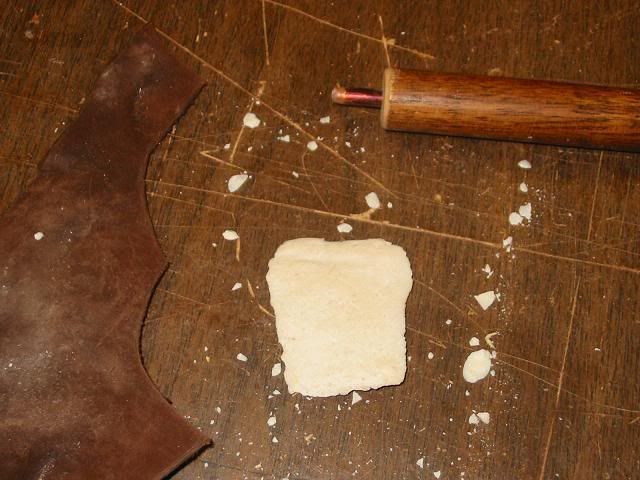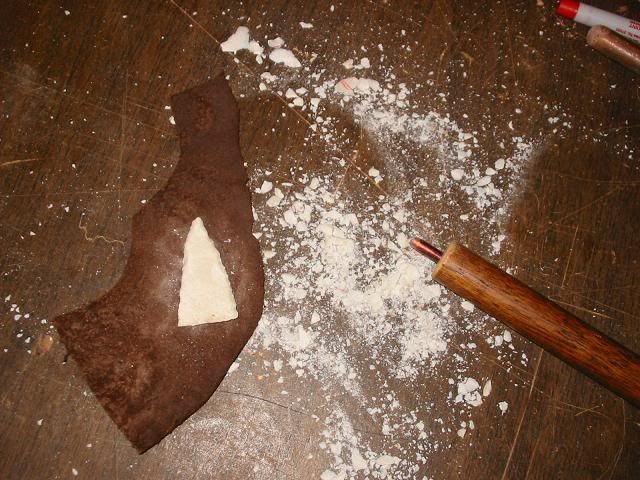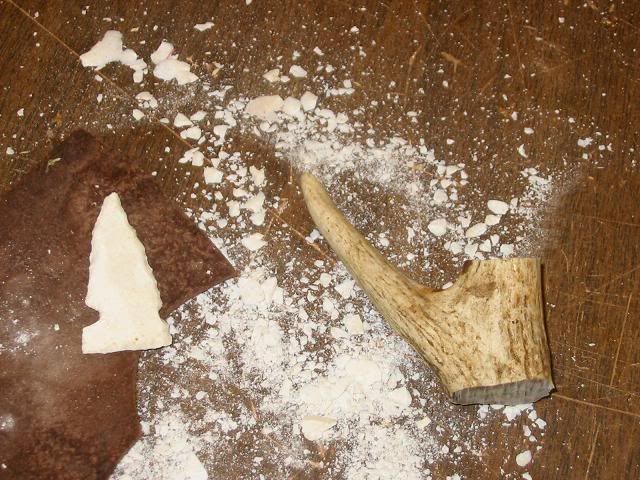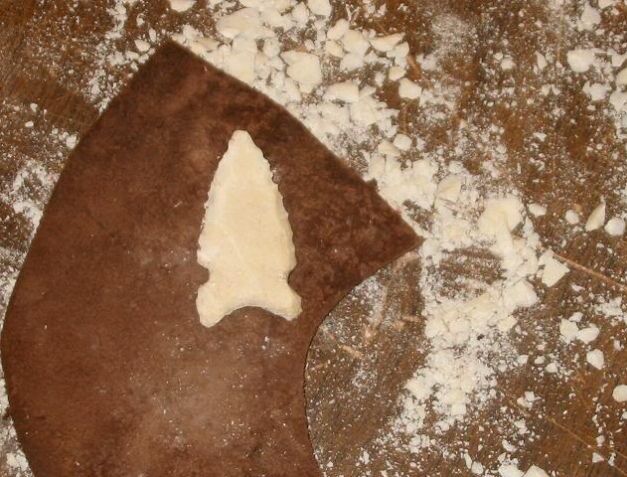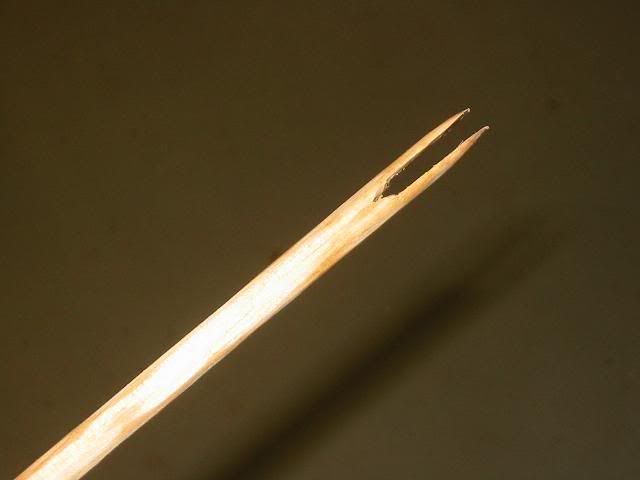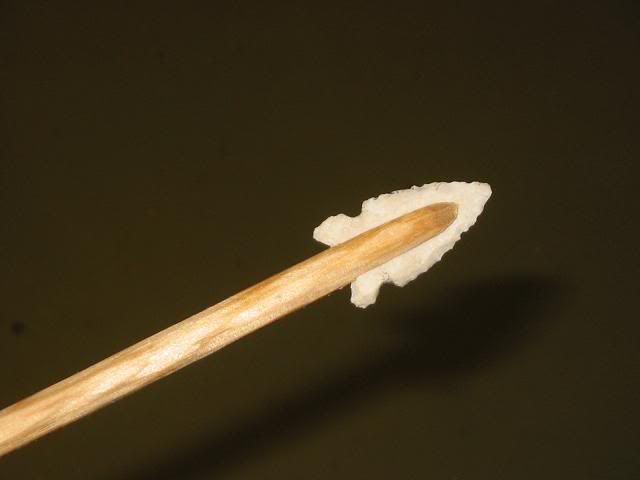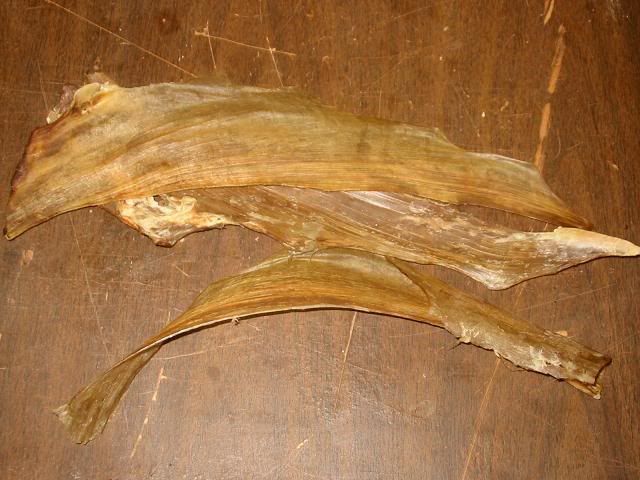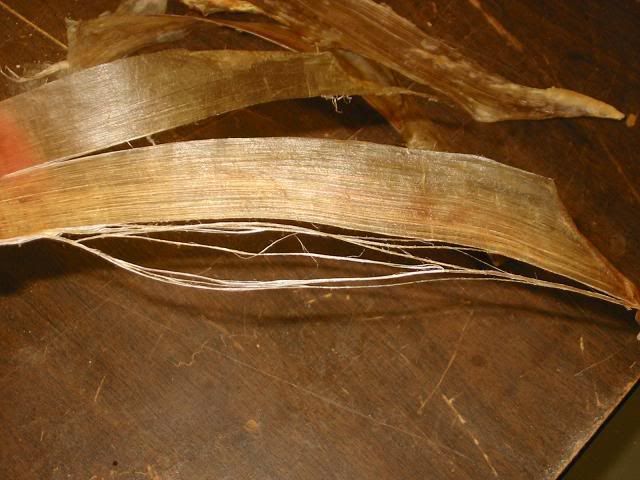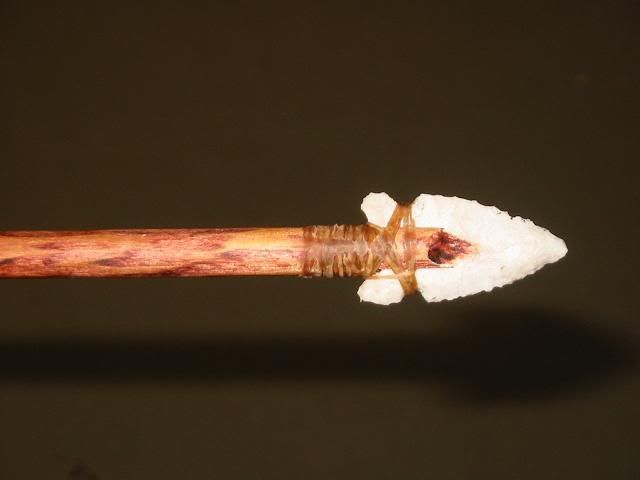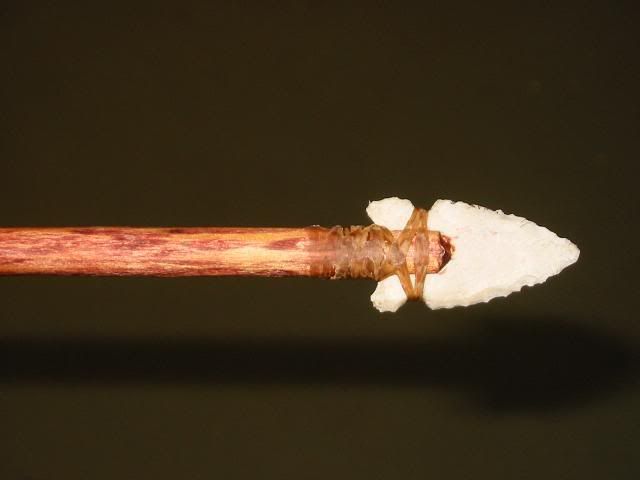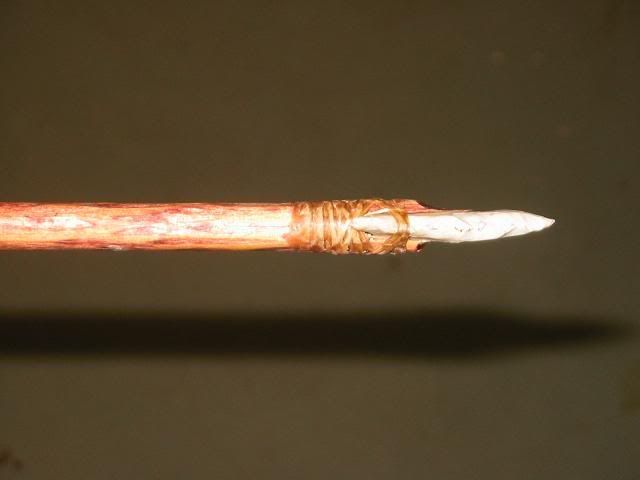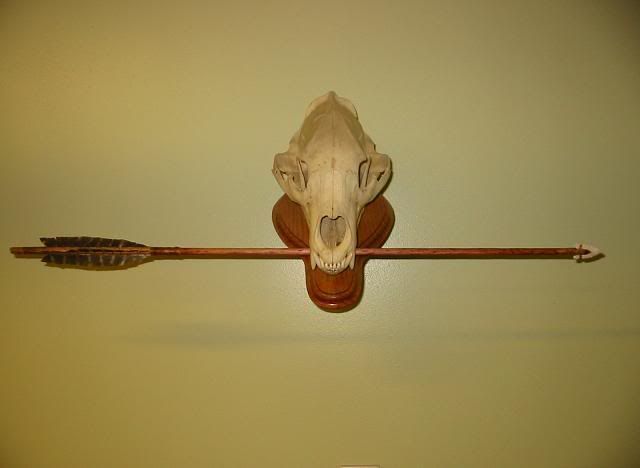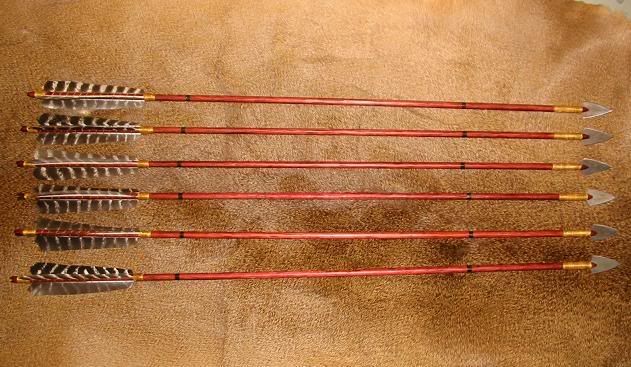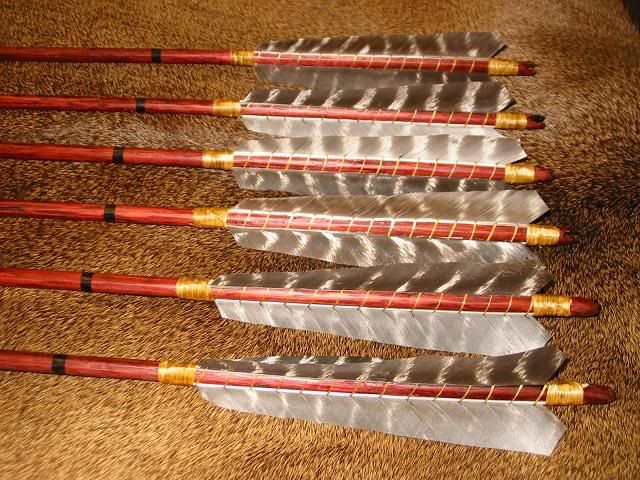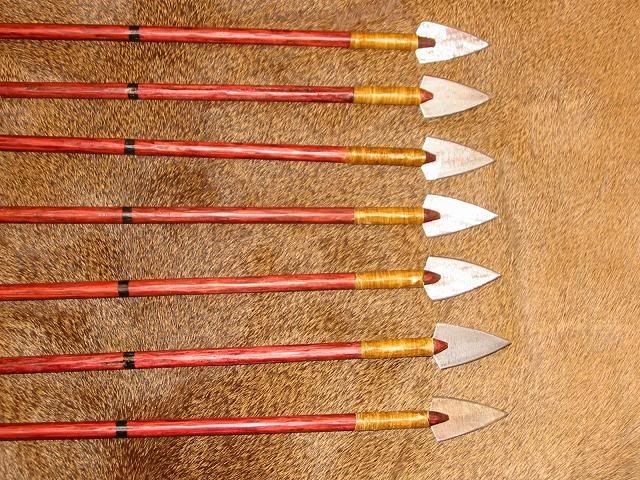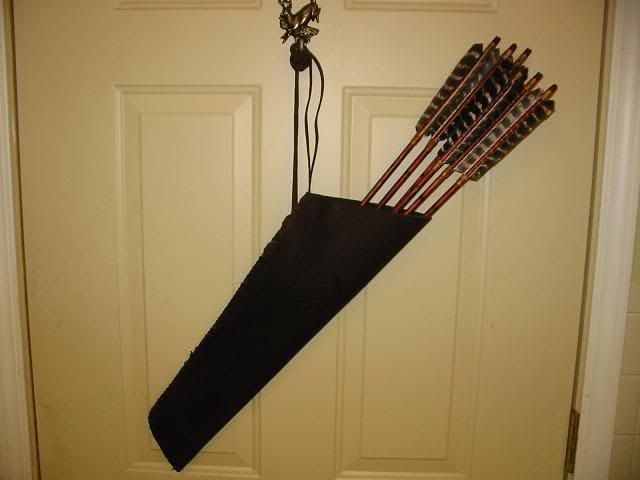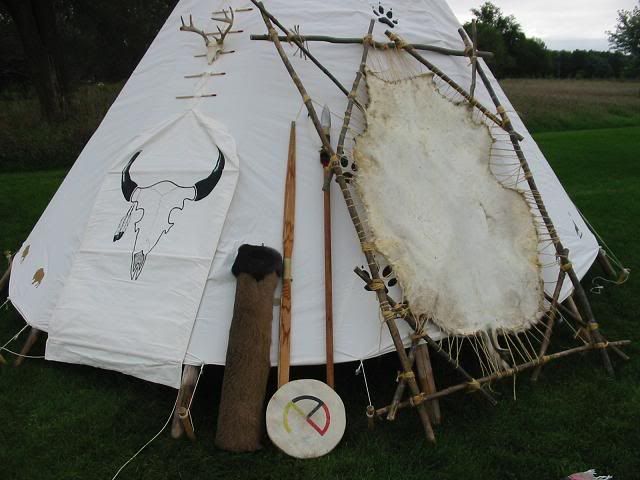Stay Sharp
Well-known member
This is the process I use to make the broadheads that I hunt with.
I use 125 grain field points and reshape them to remove the shoulders. this step may not be necessary buy It looks nice.
the blades are cut from a .039 thick bandsaw blade.
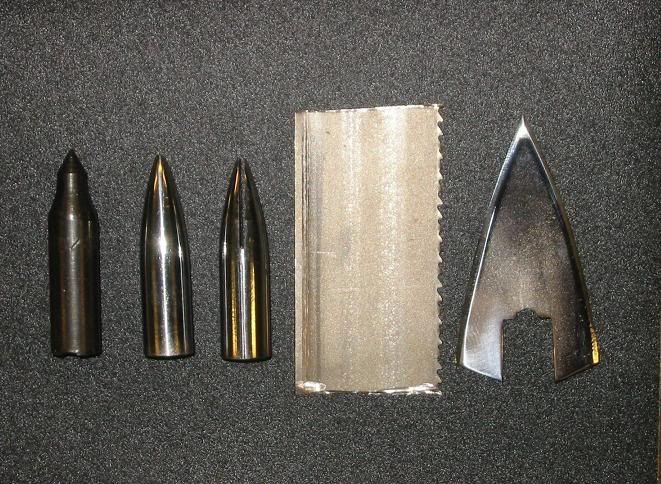
the jig for slotting the field point is made of steel and clamps the point while the spacer (piece of hacksaw blade) Leaves room for the saw to pass between the two halves to cut the slot.
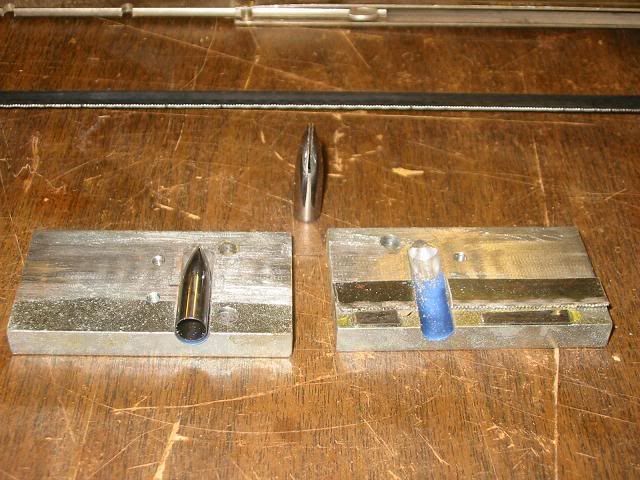
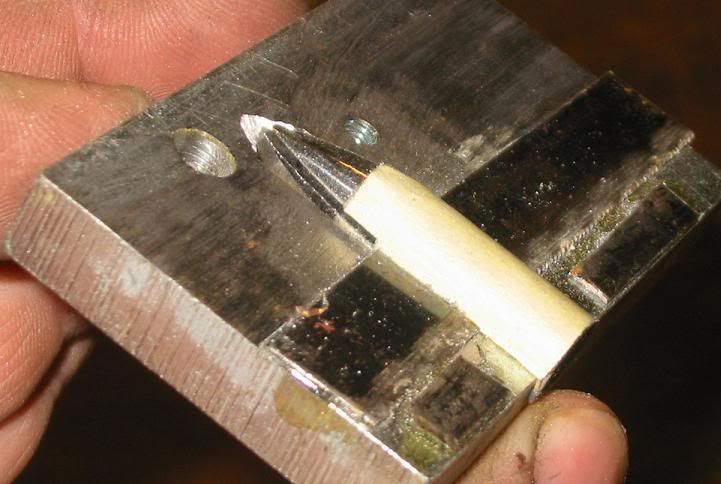
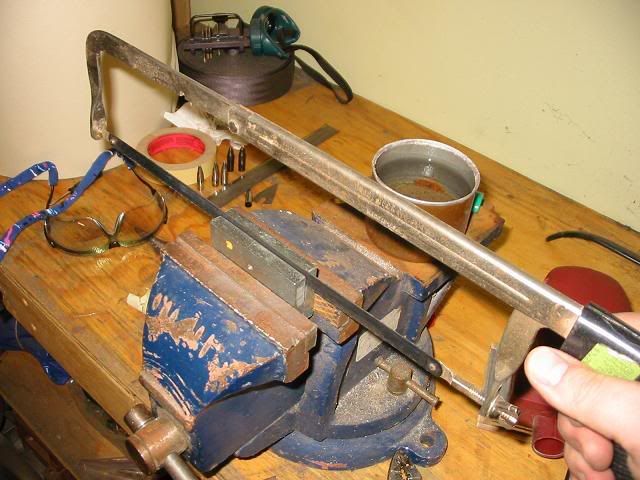
I then polish the two pieces and make sure I have a good fit up.
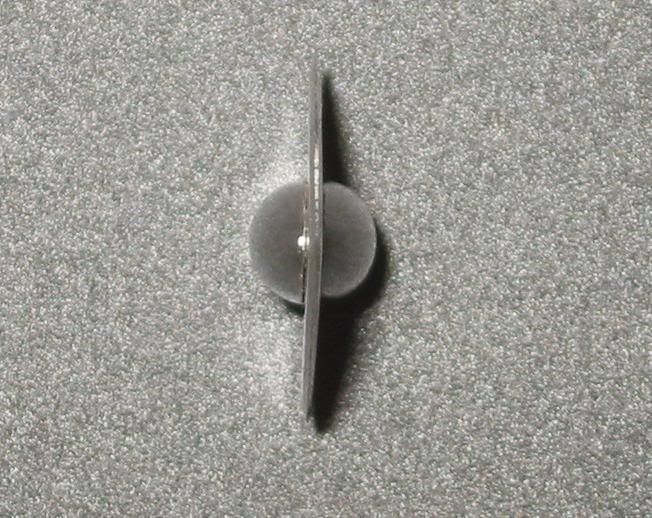
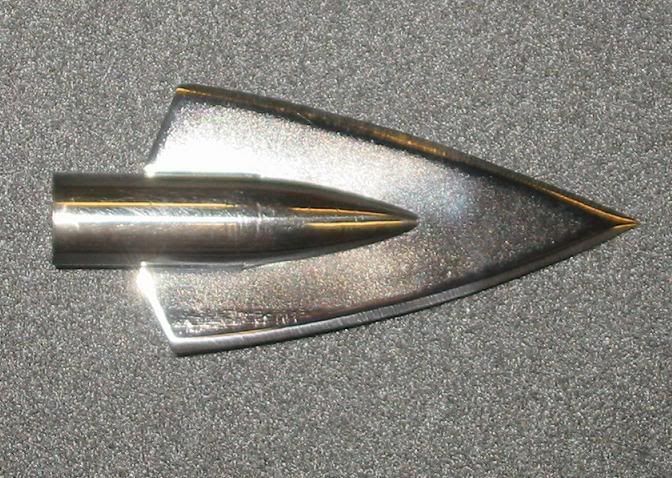
Next I braze the two parts together although I think solder or even J.B. Weld would suffice. I may try this on the next batch because brazing is messy and I have to quench afterward to make sure the heads are hard.
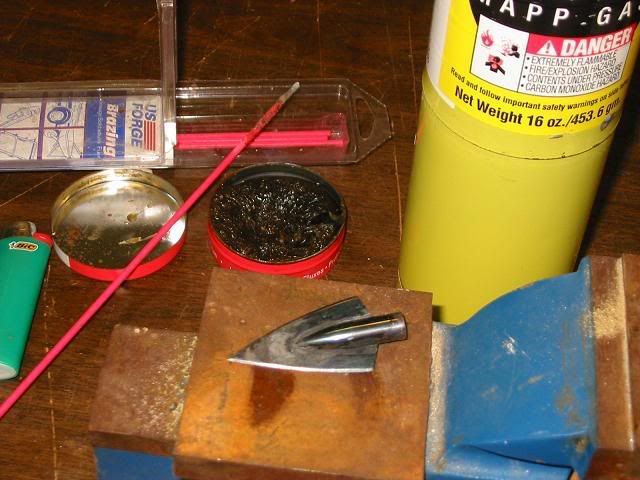
After cleaning and polishing again, I use a cold bluing to protect the heads and then a light coat of oil.
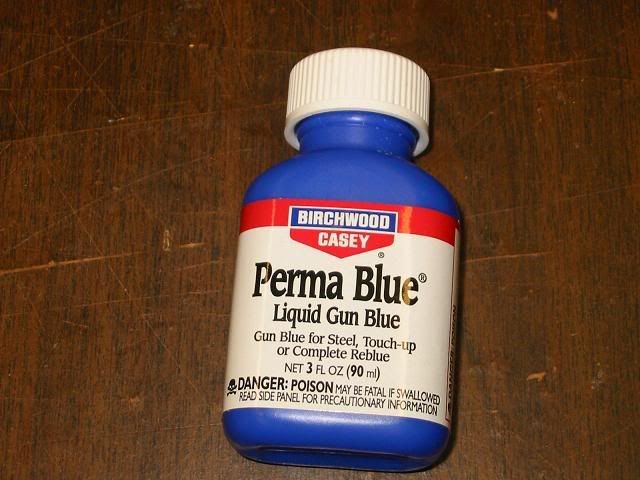
Finished weight, 165 grains. about 1 inch wide (15/16) and 1 1/4 long.
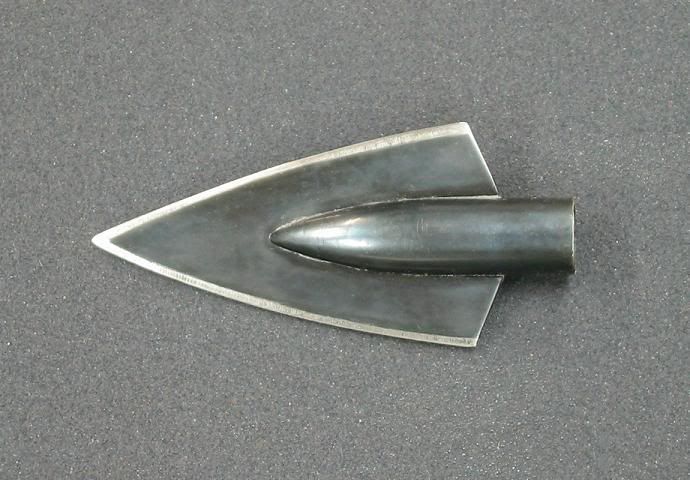
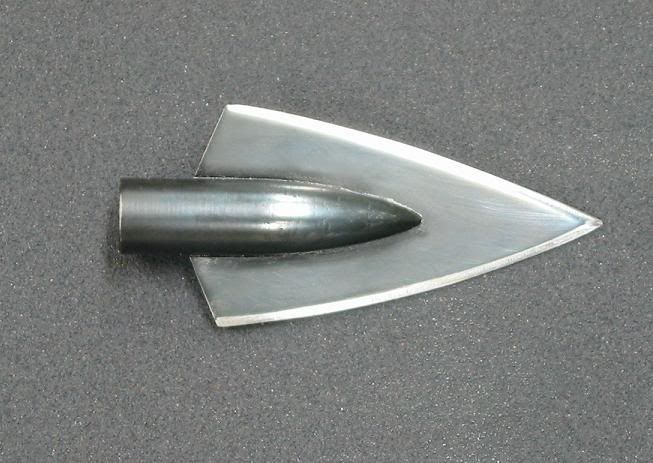
After reading Dr. Ashby's report on single bevel broadheads.(right after I finished the last batch of double bevel heads) I just had to make some single bevel heads. It just makes so much sense. I will test both to see if I get his results.
http://www.tradgang.com/ashby/single-bevel-broadheads.pdf
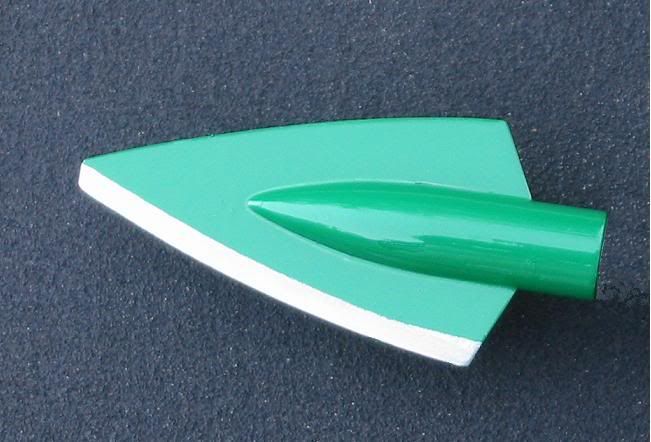
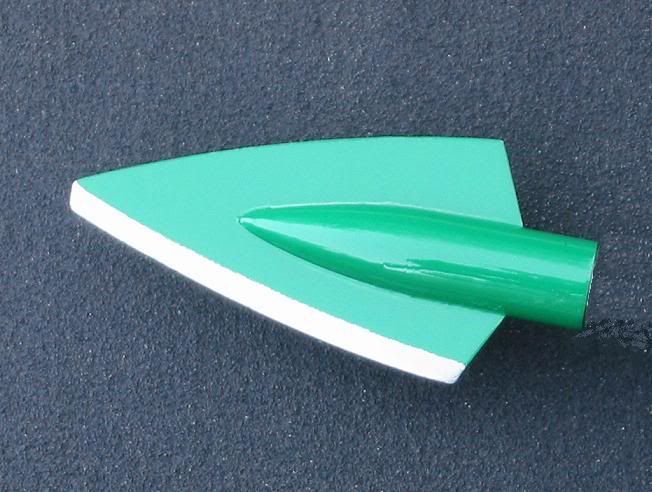
After making the first set of single bevel heads, I made a new set with a longer profile.
Then I fooled around with a longer version.
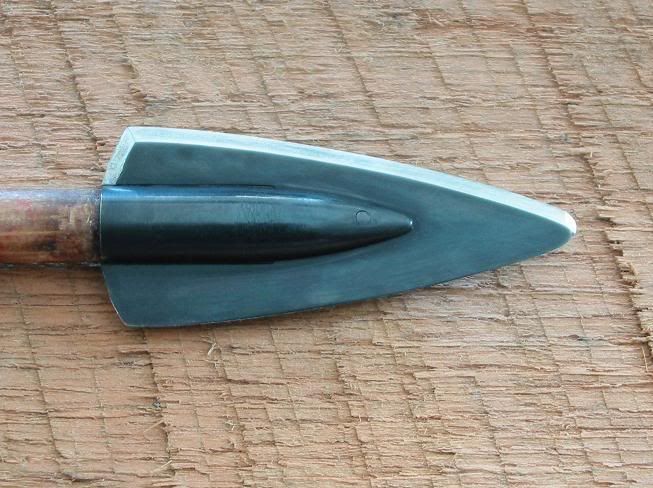
I use 125 grain field points and reshape them to remove the shoulders. this step may not be necessary buy It looks nice.
the blades are cut from a .039 thick bandsaw blade.

the jig for slotting the field point is made of steel and clamps the point while the spacer (piece of hacksaw blade) Leaves room for the saw to pass between the two halves to cut the slot.



I then polish the two pieces and make sure I have a good fit up.


Next I braze the two parts together although I think solder or even J.B. Weld would suffice. I may try this on the next batch because brazing is messy and I have to quench afterward to make sure the heads are hard.

After cleaning and polishing again, I use a cold bluing to protect the heads and then a light coat of oil.

Finished weight, 165 grains. about 1 inch wide (15/16) and 1 1/4 long.


After reading Dr. Ashby's report on single bevel broadheads.(right after I finished the last batch of double bevel heads) I just had to make some single bevel heads. It just makes so much sense. I will test both to see if I get his results.
http://www.tradgang.com/ashby/single-bevel-broadheads.pdf


After making the first set of single bevel heads, I made a new set with a longer profile.
Then I fooled around with a longer version.





